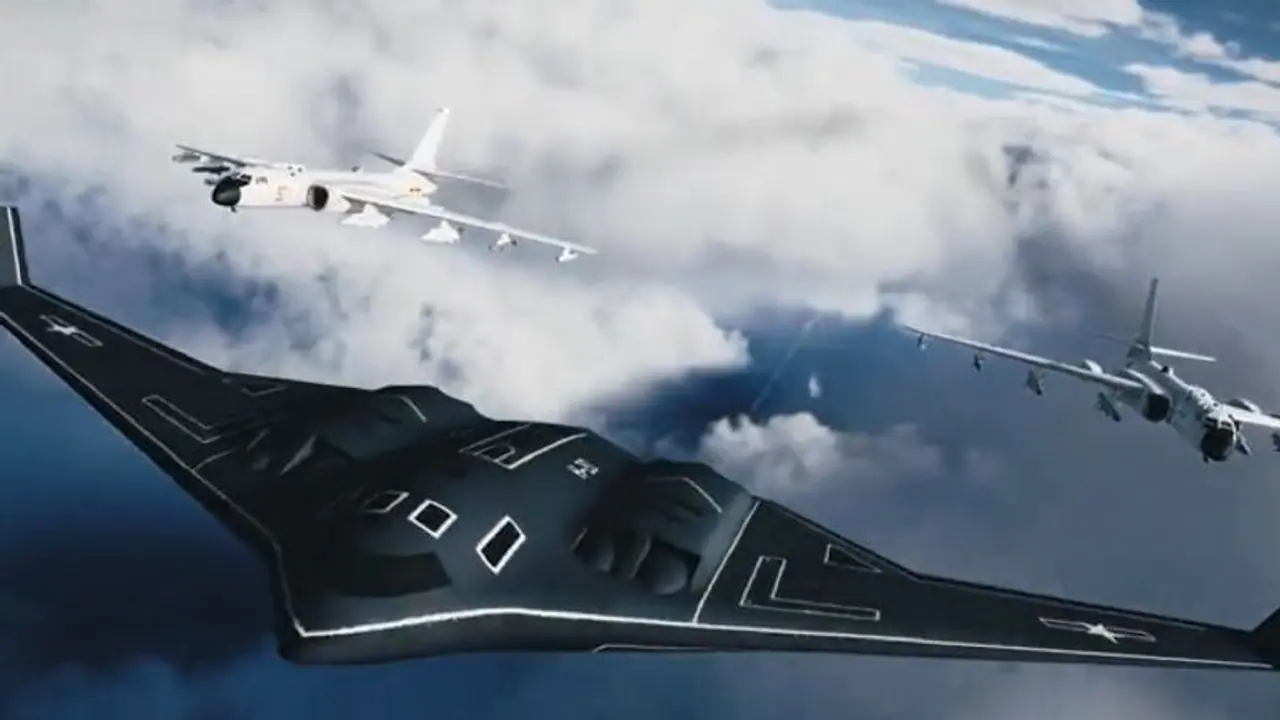While the H-20 is a significant development for China's military, it may not be the game-changer that some have suggested, particularly given the strong US presence in the region. Girish Linganna examines
China has long been working to modernise its military capabilities, with a particular focus on enhancing its ability to project power beyond its borders. One of the most significant developments in this regard is the development of the H-20 stealth bomber, which is expected to be operational by 2025.

The H-20 is a strategic bomber, which means that it is designed to carry out long-range missions and deliver a range of weapons, including nuclear weapons. It is expected to have a range of up to 8,000 kilometres, which means that it could potentially reach the continental United States from bases in China. The bomber is also expected to have stealth capabilities, which would make it difficult to detect by radar and other detection systems. This would make it easier for China to carry out surprise attacks on enemy targets, potentially giving it a significant advantage in a conflict.
Beyond Borders: China's H-20 Stealth Bomber and its Impact on the Balance of Power
While China has not revealed much about the specifications of the H-20, experts believe that it could be based on the B-2 stealth bomber, which is currently operated by the United States. The B-2 is a highly advanced aircraft designed to evade radar detection and deliver precision strikes with conventional or nuclear weapons. If the H-20 is indeed based on the B-2, it would be a significant leap forward for China's military capabilities.
The development of the H-20 is part of China's broader military modernization efforts, which have been ongoing for several years. China has been investing heavily in new weapons systems, including advanced fighter jets, ballistic missiles, and aircraft carriers. This has raised concerns among many countries in the region, particularly in light of China's increasingly assertive behaviour in the South China Sea.
The H-20 is particularly concerning for the United States and its allies in the region, as it could potentially give China the ability to strike targets in the United States and other countries in the region. This would significantly shift the balance of power in the region and could lead to a new arms race between China and its neighbours. This would also significantly enhance China's ability to project power beyond its borders and challenge the United States' position as the dominant military power in the region.
In response to China's military modernization efforts, the United States has been working to strengthen its alliances in the region and enhance its military presence. The United States has been conducting joint military exercises with its allies, including Japan, South Korea, and Australia, and has been working to enhance its naval capabilities in the region.
The United States has also been investing heavily in new weapons systems, including advanced fighter jets and missiles, which are designed to counter the growing threat posed by China's military capabilities. The United States has also been working to develop new technologies, such as hypersonic missiles, which would be able to penetrate China's defences and strike targets with unprecedented speed and accuracy.
China's New Toy: A Menace to US National Security or Overhyped Military Asset?
While the development of the H-20 is a significant development in China's military modernization efforts, it is important to note that the United States still maintains a significant military advantage in the region.
Some reports believe that the bomber is an impressive addition to China's military capabilities, it may not be able to breach US island defences in the region. As it also points out that the US has a strong presence in the region, including on islands such as Guam, which would be difficult for China to attack with a stealth bomber.
While the H-20 is a significant development for China's military, it may not be the game-changer that some have suggested, particularly given the strong US presence in the region.
The H-20's effectiveness could be limited by its payload capacity. The H-20 is expected to have a maximum payload capacity of around 20 tons, which is significantly lower than the payload capacity of other long-range bombers, such as the US B-2 Spirit or the Russian Tu-160. This means that the H-20 may not be able to carry enough munitions to be effective against heavily defended targets.
While the H-20 is expected to have a range of over 8,000 km, it may not be able to carry enough weapons to deliver a decisive blow against US targets in the region. There is potential for US and allied forces to detect and intercept the H-20 using advanced radar and missile systems.
The H-20's stealth capabilities may not be sufficient to evade detection by the US and its allies, who have invested heavily in advanced radar and missile defence systems. Additionally, H-20 may be vulnerable to electronic warfare, which could disrupt its communication and navigation systems. This could make it easier for US and allied forces to track and target the H-20, limiting its effectiveness in the region.
H-20 may be limited by China's lack of forward bases in the region. China currently does not have any permanent military bases in the Pacific, which could limit its ability to deploy and support the H-20 in the event of a conflict. China has been investing in a "string of pearls" strategy to build military bases and ports in the Indian Ocean region, but this strategy may not be sufficient to support long-range operations in the Pacific. This means that the H-20 may not have the necessary logistical support to operate effectively in the region.
Girish Linganna is a defence and aerospace analyst
'Strike Deep, Strike Hard': India revisits 2019 Balakot airstrike
